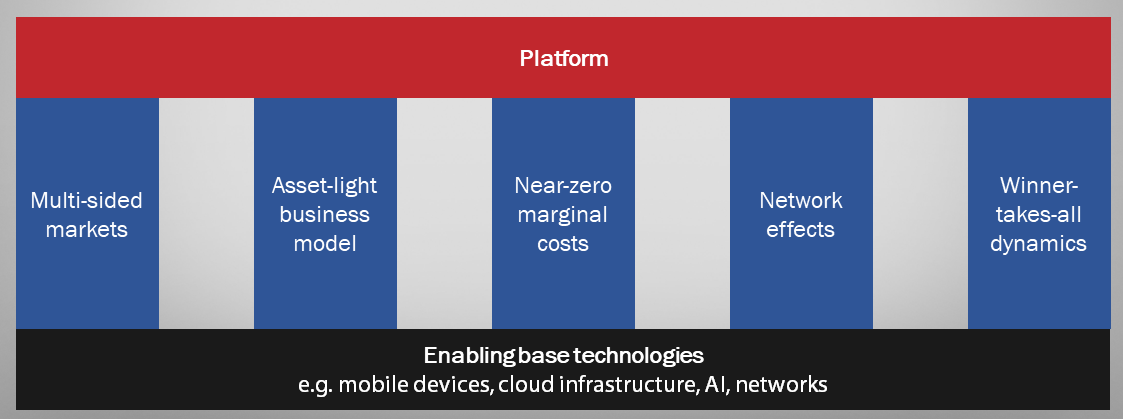Apologies for the slightly clickbait-y title. But it’s true: Everybody wants to build a platform – the term has become inflationary in startup and innovation circles. That’s understandable because successful platforms are amongst the most profitable and most rapidly growing businesses in the world.
However, building a successful platform is exceedingly risky and difficult. A thorough understanding of platform economics is key (that’s one of the things Mark Zuckerberg excels at, BTW). The platform business is also rapidly changing with new regulatory initiatives and emerging technologies (such as blockchain) that can potentially endanger incumbent platforms and open new opportunities for innovators.

I’m trying something a bit different with this article. Blog posts are great, but they typically can only cover a relatively narrow topic. For a more complex topic such as platforms, it’s not an ideal format because who really wants to read a 20,000 word blog post?
That’s why I put together the following presentation of about 30 slides. It covers the following key topics:
- What a platform is and why you should care
- Types of platforms
- The five pillars of platform economics (including key concepts such as multi-sided markets and network effects)
- How to create and grow platforms
- Strategies for platform complementors
Here it is:
Notes:
- Yes, it’s a bit wordy, because it’s meant to be read, not presented in this form.
- After experimenting with various options, I found that the best way to create and share a complex presentation on the web currently is … Microsoft PowerPoint. A good example for how sometimes old platform dogs can learn new tricks.
- You can also download a PDF version of this presentation here. Please feel free to share with attribution.
- Please let me know what you think. This is a highly dynamic topic, so any kind of feedback would be great.



1 Comment
Thomas Rupp · October 5, 2018 at 08:58
hello Andreas
just found your new site which says you are back in Switzerland hence I hope all is fine ! Pixability seems to take off from what an outsider can see 🙂
Of course I am curious what you plan with Innospective and therefore I wanted to share a few quick thoughts on your Platforms slide deck:
1. Platforms = Business Models (Slide 3)
not sure I fully agree that a platform is a business model; but some business models can be enabled by platforms. I think the business problem you want to solve must be picked first and then you can seek ways to construct a platform to implement it. Over a company life cycle, I belief that the initial core business is more important than the platform which is only built at that time while later on, its platform should outlast the initial core business. Few tech companies are old enough to have proven this but there are others like keiretsus, chaebols.
2. Platform Pillars and Monetization (slides 7, 18)
what might get overlooked easily is that the value to end customers must be massively compelling which typically happens from a combination of multi-sided markets (and disintermediation) with network effects (leading to winner-takes-all dynamics) and enabling technology. In my mind, Uber is an example since I get a significantly better service at a lower price.
Once the masses see – or better – experience their benefit (“outsized consumer rent” in economics terms) they will even agree to pay in multiple ways, sometimes unknowingly. To that end, I would argue that YouTube (and others) is actually not truly free to users since they pay with their data that is being monetized.
The above are details (which sometimes matter a lot) and I agree with most what you list in a very comprehensive overview! A lot to be discussed and quite some potential in the Swiss market to offer advice to companies built before platforms were a realistic option.